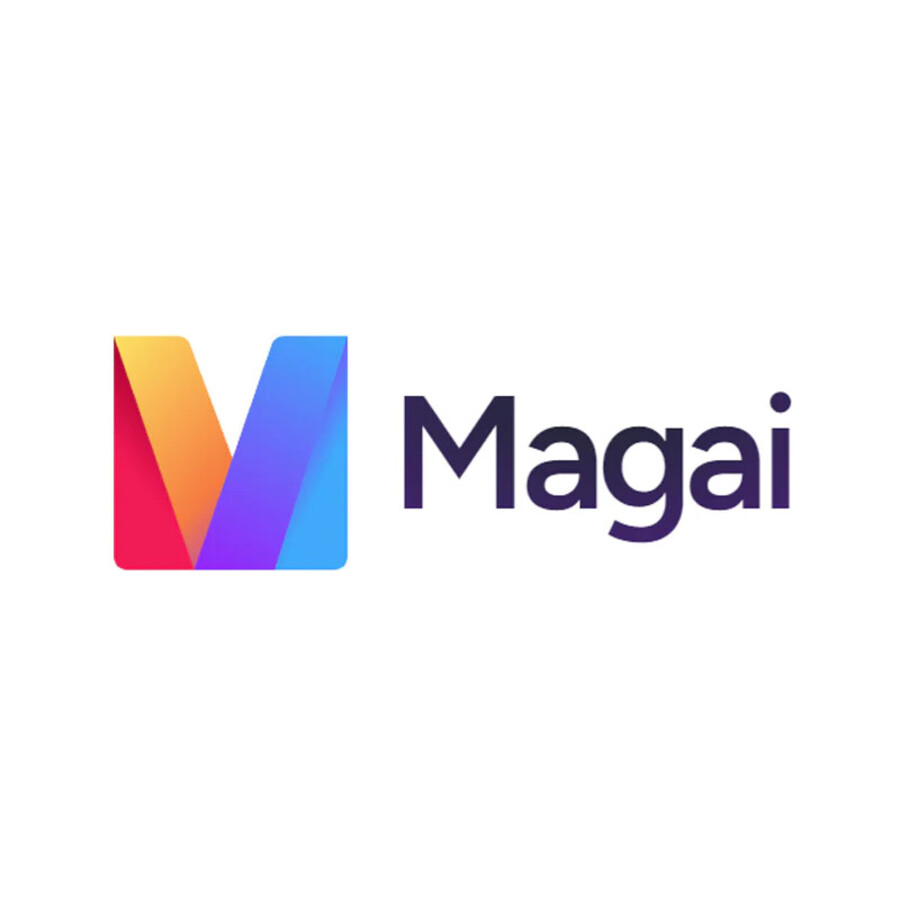In an age where information is at our fingertips, the challenge of sifting through vast amounts of data has never been more pronounced. As professionals across various sectors grapple with overwhelming volumes of documents, the need for innovative solutions to streamline this process has surged. Humata AI emerges as a game changer, harnessing the power of artificial intelligence to tackle these challenges head-on. This blog post provides a comprehensive introduction to Humata AI, exploring what it is, the problems it addresses, its advantages over traditional tools, and how it can transform your document analysis experience.
What is Humata.ai?
Humata AI is a robust platform designed to facilitate advanced document analysis using artificial intelligence. It leverages state-of-the-art natural language processing (NLP) and machine learning technologies to provide users with rich insights from their documents in real-time. Whether you're dealing with lengthy reports, research papers, legal contracts, or business presentations, Humata enables deep interaction with these texts, allowing users to obtain specific information, summarize content, and even engage in Q&A sessions with the documents themselves.
The platform is particularly designed for individuals and organizations that require quick access to essential information buried within extensive text. By simplifying the way we interact with documents, Humata AI transforms tedious tasks into efficient processes, empowering users to focus on what truly matters – making informed decisions based on accurate and concise insights.
The problem Humata.ai solves for users
The modern workplace is inundated with information. As businesses expand and data becomes increasingly digitized, professionals often find themselves overwhelmed by the sheer volume of documents at their disposal. This phenomenon, referred to as information overload, poses significant challenges in retrieving specific details when needed. Often, critical decisions are delayed due to difficulty locating relevant information, which can ultimately lead to lost opportunities and decreased productivity.
Humata AI addresses this pressing issue by providing a seamless interface to interact with documents. Users can simply upload their files, and the AI takes care of the rest, extracting key insights and enabling users to ask direct questions. This intelligent document analysis minimizes the time spent searching for information and maximizes efficiency, allowing users to navigate complex data landscapes with ease.
Humata's advantages compared to traditional document search and analysis tools
Traditional document search tools often rely on keyword matching, leading to frustration when users cannot find the precise information they seek. In contrast, Humata AI employs advanced NLP algorithms that understand context and semantics, ensuring that users receive relevant answers tailored to their queries.
Furthermore, the ability to chat with documents sets Humata apart. Instead of passively searching for terms, users can actively engage with the content, asking nuanced questions and receiving detailed responses. This shift from passive retrieval to active engagement not only enhances the user experience but also facilitates deeper understanding of the material.
Additionally, while many traditional tools offer static summaries or bullet points, Humata’s summarization feature generates dynamic overviews that capture the essence of long documents. This capability is invaluable for busy professionals who need quick insights without wading through pages of text.
How Humata AI works
Understanding how Humata AI operates is crucial to appreciating its capabilities. The platform is built on sophisticated technologies that allow it to analyze documents intelligently. From the moment a user uploads a file to the final output of insights, each step is crafted to ensure an intuitive user experience paired with powerful analytical abilities.
Core technologies behind Humata (natural language processing, machine learning, etc.)
At the heart of Humata AI lies natural language processing (NLP). This branch of artificial intelligence focuses on the interaction between computers and human language, enabling the software to comprehend text in a way similar to human understanding. Through NLP, Humata can parse complex sentences, recognize intent, and extract pertinent information based on user queries.
Machine learning plays a complementary role in this framework. As users interact with the platform, Humata learns from these interactions, continuously refining its algorithms to deliver even more accurate results over time. This feedback loop ensures that as the user base grows and diversifies, the AI becomes increasingly adept at meeting varied document analysis needs.
A combination of these technologies allows Humata to go beyond mere keyword searches. It can recognize synonyms, infer meaning from context, and even identify trends across multiple documents, thereby enriching the user's analytical experience.
Process of uploading and analyzing documents on Humata
The process of utilizing Humata AI is designed with user-friendliness in mind. Users begin by uploading their documents, whether they're in PDF format, Word documents, or other supported types. Once uploaded, the AI immediately begins analyzing the text, breaking down complex structures and indexing vital information for easy retrieval.
This initial analysis involves several steps. First, the AI examines the document's overall structure, identifying headings, subheadings, and paragraphs. Then, it delves into the content itself, applying NLP techniques to extract keywords and themes. This groundwork forms the foundation for the subsequent features, such as summarization and Q&A functionalities.
Users can check the progress of the analysis in real-time, receiving notifications once the document is ready for interaction. This transparency reassures users about the efficiency of the process and encourages them to explore the insights available.
How users interact with Humata to get insights and answers
Once the document analysis is complete, users can engage with Humata through a straightforward chat interface. Here, they can type in questions related to the document's content, and the AI will respond with accurate, contextual answers drawn from the text. This interaction mimics a conversation, allowing users to clarify their queries or drill down further into specific areas of interest.
Beyond simple Q&A, Humata offers additional interactive features, such as chat-based summarization and insight extraction. For example, if a user asks for a summary of a section or requests key takeaways, the AI can generate concise overviews that encapsulate the main points. This kind of dynamic interaction fosters a more engaging and productive experience compared to conventional document reading.
Moreover, users can highlight sections of text within the chat interface, prompting the AI to provide deeper analyses or explanations. This functionality promotes a collaborative atmosphere between the user and the AI, transforming traditional document exploration into an engaging dialogue.
Key Features of Humata AI
Humata AI stands out in the crowded landscape of document analysis tools, thanks to its array of unique features. These capabilities cater to a wide range of user needs, making it an essential tool for professionals across industries.
Upload and analyze various file types (PDFs, Word documents, etc.)
One of the primary conveniences offered by Humata AI is its compatibility with various file formats. Users can effortlessly upload documents in the most common formats, including PDFs, Word documents, and more. This flexibility means that professionals working with diverse media can utilize the platform without needing to convert files or worry about compatibility issues.
The document analysis occurs seamlessly across these formats, ensuring that users can expect consistent performance regardless of the source material. This aspect is especially beneficial for teams handling different types of documents simultaneously, as it streamlines workflows and promotes efficiency.
Furthermore, the platform is designed to maintain the integrity of the original document, preserving formatting and organization. This attention to detail enhances usability, allowing users to navigate their documents with confidence.
Chat with documents to ask questions and get specific information
Humata’s interactive chat feature revolutionizes the way users engage with their documents. Rather than merely reading through pages, users can pose questions directly related to the content, enabling a much deeper level of understanding.
This functionality allows for a vast range of inquiries. Users can seek clarification on specific terms, request explanations of complex concepts, or even ask for comparisons between different sections of text. The AI responds promptly, providing tailored answers that align with the user’s inquiry.
For instance, a researcher may want to know how a particular study's findings relate to their own work. Instead of spending hours combing through the document, they can simply ask Humata to draw those connections, saving valuable time and effort.
Summarize long documents into concise overviews
In today’s fast-paced world, the ability to distill large amounts of information into digestible summaries is invaluable. Humata AI excels at this task, offering users the option to generate concise overviews of lengthy documents.
These summaries capture the core messages and critical points, allowing users to grasp essential information quickly. This feature is particularly beneficial for executives and decision-makers who often face the daunting task of reviewing numerous reports and proposals.
Moreover, users can customize the level of detail in the summaries they receive. Whether they require a brief overview or a more comprehensive synopsis, Humata tailors its output to meet the specific needs of the user. This adaptability enhances overall productivity and empowers users to make informed decisions based on succinct insights.
Extract key insights and takeaways
Beyond summarization, Humata AI offers the ability to extract key insights and takeaways from documents. This feature identifies critical data points, patterns, and recommendations embedded within the text, providing users with valuable information at their fingertips.
For example, in a business report, Humata may highlight important statistics, actionable insights, or strategic recommendations made by the authors. This targeted approach eliminates the need for users to sift through entire documents, enabling them to focus on the most relevant information for their objectives.
The extraction of insights is driven by the AI's understanding of context and relevance, ensuring that users receive high-quality information tailored to their specific needs. This capability makes Humata an indispensable tool for professionals looking to leverage data for strategic advantage.
Generate reports and presentations based on document analysis
Effective communication of ideas is crucial in any professional setting. Humata AI goes a step further by allowing users to generate reports and presentations derived from their document analyses.
This feature streamlines the process of creating professional materials, as users can pull together insights, summaries, and key points directly from their document interactions. With a few clicks, they can compile comprehensive reports that reflect their findings and analyses, ready to be shared with stakeholders.
Additionally, this capability fosters collaboration among team members, as individuals can contribute insights pulled from their interactions with Humata. This collective knowledge-sharing leads to richer presentations and more impactful discussions.
Collaboration and sharing features
In an interconnected work environment, collaboration and sharing capabilities are essential. Humata AI recognizes this need and includes features that enable users to easily share their insights and analyses with colleagues and team members.
Users can export documents, summaries, and reports produced by Humata, facilitating seamless integration into existing workflows. This functionality is particularly advantageous for teams working on joint projects or research initiatives, as it promotes transparency and collective learning.
Moreover, the platform supports real-time collaboration, allowing multiple users to engage with a document simultaneously. This dynamic interaction creates opportunities for brainstorming, discussion, and deeper exploration of the content, enhancing overall outcomes.
Application of Humata AI
The versatility of Humata AI makes it applicable across various domains. Its powerful document analysis capabilities cater to industry-specific needs, enhancing productivity and streamlining workflows.
Research and analysis
In the realm of research, scholars and analysts often contend with vast repositories of literature and data. Humata AI significantly aids researchers by making it easier to locate relevant studies, synthesize findings, and derive impactful conclusions.
Academics can upload their literature reviews or research papers and use the platform to pinpoint gaps in existing research or identify trends across multiple sources. This capability fosters innovation and encourages the generation of new hypotheses grounded in solid evidence.
Additionally, researchers can engage in Q&A sessions with their documents, asking the AI to highlight significant contributions made by various authors or compare methodologies. Such interactions empower researchers to craft well-informed literature reviews and enhance the overall depth of their analyses.
Legal and compliance
In the legal field, the ability to navigate dense legal documents swiftly is paramount. Humata AI caters to legal professionals by providing tools for swift document comprehension, contract analysis, and compliance checks.
Lawyers can upload contracts and legal agreements to identify potential risks, obligations, and clauses that require further scrutiny. The AI’s ability to extract key insights saves time and reduces the probability of overlooking crucial details, ultimately supporting sound legal practices.
Moreover, compliance officers can utilize Humata to stay abreast of regulatory changes and analyze documents related to compliance standards. This application of AI-powered insights mitigates risk and enhances adherence to legal requirements.
Education and training
Educators and trainers can leverage Humata AI to enrich their teaching materials and improve student engagement. By analyzing course content, Humata can recommend supplementary resources, create customized summaries, and generate assessments aligned with educational objectives.
Teachers can also utilize the platform to assess student submissions, extracting key points and providing tailored feedback based on the content. This capability promotes active learning and helps educators support students in their learning journeys.
Additionally, trainers can develop structured training programs by compiling insights from various documents, ensuring that participants receive comprehensive and relevant information.
Business intelligence
In the competitive business landscape, organizations must make informed decisions backed by data-driven insights. Humata AI serves as a powerful tool for business intelligence efforts, allowing companies to analyze market research, reports, and customer feedback efficiently.
Business leaders can upload disparate data sources and ask the AI to aggregate insights, identify trends, and reveal opportunities for growth. This analytical prowess supports strategic planning and enables businesses to stay ahead of the curve.
Furthermore, Humata’s collaborative features facilitate cross-departmental knowledge sharing, ensuring that different teams can contribute to business intelligence efforts. This holistic approach empowers organizations to leverage collective expertise for enhanced decision-making.
Any field where document analysis is crucial
Ultimately, Humata AI is adaptable to any field requiring effective document analysis. From healthcare to finance, engineering to journalism, professionals across industries can benefit from its advanced capabilities.
In healthcare, for instance, Humata can assist practitioners in analyzing medical literature and clinical studies, extracting relevant guidelines, and improving patient care protocols. Similarly, journalists can leverage the platform to sift through sources, gather insights, and produce accurate articles efficiently.
As the demand for effective document analysis continues to grow, Humata AI represents a forward-thinking solution that transcends industry boundaries.
Humata AI Pricing Plans
Understanding the pricing structure of Humata AI is essential for potential users seeking clarity about costs and value. The platform offers tiered pricing plans that cater to different user needs, ensuring accessibility while maintaining a high standard of service.
Breakdown of different pricing tiers and features
Humata AI provides a range of pricing options, accommodating individual users, small teams, and larger enterprises. Each tier comes with distinct features that correspond to varying levels of document analysis requirements.
Entry-level plans typically include basic document uploading and analysis capabilities, perfect for users who need to handle occasional document review tasks. As users upgrade to higher tiers, they gain access to advanced features such as enhanced AI insights, collaboration tools, and priority support.
For larger organizations, enterprise plans often incorporate unlimited document uploads, premium customization options, and dedicated account management. This flexibility ensures that businesses can scale their usage of Humata AI according to evolving needs.
Free trial or limited free plan options
To encourage users to explore its capabilities, Humata AI often offers a free trial or limited free plan options. This initiative allows potential users to experience the platform before committing to a paid plan.
During the trial period, users can access core functionalities, upload documents, and engage with the AI to gauge its effectiveness. This hands-on approach fosters confidence in the product, empowering users to make informed decisions regarding future investments.
Cost comparison with other AI document analysis tools
When evaluating Humata AI's pricing, it's important to consider the competitive landscape of AI document analysis tools. While some platforms may offer lower prices, they may lack the features and capabilities that make Humata stand out.
A thorough cost-benefit analysis involves assessing the value added by Humata's unique features, such as chat-based interactions, summarization, and insight extraction. Many users find that the time and effort saved through this efficient tool outweighs the associated costs, making it a worthy investment for organizations serious about optimizing document analysis.
Humata AI Alternatives
While Humata AI presents a compelling case for document analysis, it’s essential to consider alternatives available in the market. Various competitors offer similar functionalities, and understanding these options can help users choose the best fit for their needs.
Popular alternatives in the market (e.g., AskYourPDF, Docalysis)
Several other platforms have emerged as noteworthy competitors to Humata AI. Notable examples include AskYourPDF and Docalysis, each offering distinct features that cater to document analysis needs.
AskYourPDF is a user-friendly tool that specializes in converting PDFs into editable documents while retaining formatting. Its primary focus is on simplifying document manipulation rather than in-depth analysis.
On the other hand, Docalysis is geared towards automating the extraction of data from documents, making it an ideal choice for users who require extensive data processing capabilities. However, it may lack the conversational interface and summarization features that set Humata apart.
Feature comparison table
| Feature | Humata AI | AskYourPDF | Docalysis |
|---|---|---|---|
| Natural Language Processing | Yes | Limited | Yes |
| Chat-based Interaction | Yes | No | No |
| Document Summarization | Yes | No | No |
| Insight Extraction | Yes | No | Yes |
| File Format Support | Multiple formats | PDF-focused | Multiple formats |
| Collaboration Features | Yes | No | Limited |
Choosing the right platform based on specific needs and budget
When selecting a document analysis platform, users should consider their specific needs, expected usage, and budget constraints. For organizations that prioritize comprehensive insights and interactive engagement, Humata AI may be the most suitable choice.
Conversely, smaller teams or individuals with simpler needs might find that tools like AskYourPDF suffice, especially if their focus revolves around document editing rather than deep analysis.
Ultimately, conducting thorough research and assessing available features will ensure users choose the best platform to meet their document analysis requirements.
Conclusion
Humata AI presents a transformative solution for navigating the intricacies of document analysis. By leveraging advanced technologies, it addresses prevalent challenges such as information overload and inefficiency in data retrieval. With features that promote interactivity, collaboration, and insightful analysis, Humata empowers users to unlock the full potential of their documents.
Whether you’re a researcher, legal professional, educator, or business leader, Humata’s strengths lie in its versatility and adaptability across various fields. The platform's intelligent document analysis capabilities, combined with user-friendly interfaces, position it as an essential tool for anyone seeking to enhance their document processing experiences.
As the demand for effective document analysis continues to grow, exploring Humata AI could revolutionize the way you handle information. Embrace the future of document analysis and discover how Humata can elevate your capabilities in navigating complex data landscapes.








